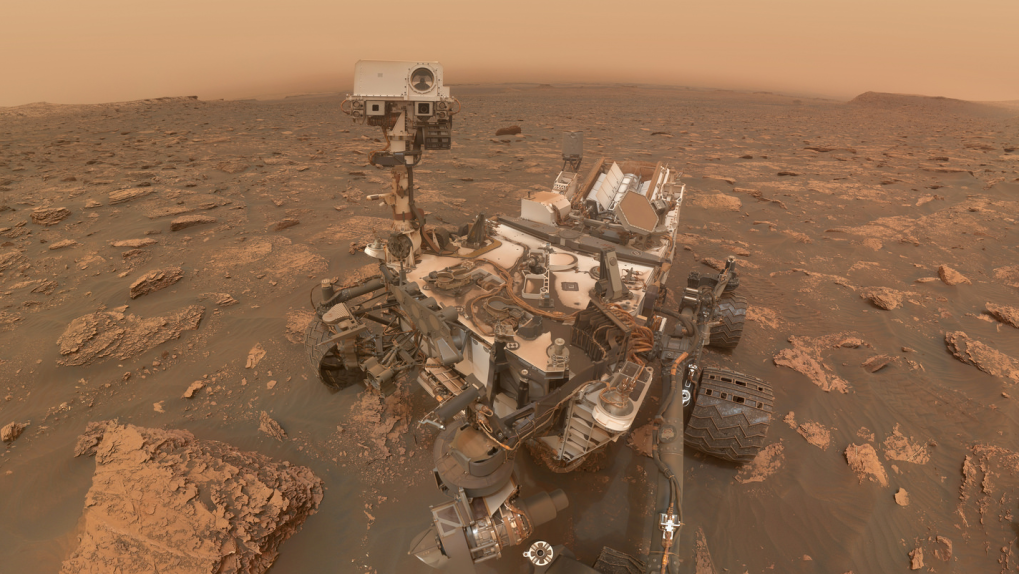The colossal dust storm on Mars that has already enveloped the Curiosity rover is now a planet-wide event. In a new bulletin, NASA explains that the dust storm has finally managed to make it around the entire planet, producing a haze in the atmosphere that obscures sunlight and offers scientists a great opportunity to study how weather on Mars works.
The Opportunity rover, which is powered by solar panels and a rechargeable battery, has been in a low-power standby mode ever since the dust storm blocked out enough sunlight to prevent the rover from functioning normally. NASA’s other rover, Curiosity, is working just fine, however. Unlike Opportunity, Curiosity is nuclear powered and doesn’t require sunlight to function. That’s why it’s been snapping selfies while Opportunity sleeps.
This isn’t the first large dust storm to be observed on Mars. A similar event occurred back in 2007, obscuring almost the entire planet aside from the peak of some Martian mountains. However, this is the first time Curiosity has been on Mars to observe such a storm, and scientists are gathering as much information as possible to help future forecasting efforts.
The storm’s intensity — how much dust and debris is in the air — it’s uniform across the planet, and some areas are darker than others. As NASA previously stated, the skies above Opportunity are essentially night, while Curiosity still has a bit of light with which to navigate and look around.
Dust storms on Mars have been notoriously hard to predict, both in their development and their longevity. Some storms die out quickly while others drag on for months, and researchers are hopeful that the new data being gathered currently will offer hints. Still, NASA has little idea of exactly when the current storm will eventually calm, and for the time being it just has to deal with the lack of light and fine debris.
We’ll still have to wait and see what condition Opportunity is in when it finally wakes back up, and whether the skies above Curiosity eventually reach the same levels of darkness that its fellow rover has experienced. In the meantime, NASA will continue to gather information on the storm and hopefully learn a thing or two.








